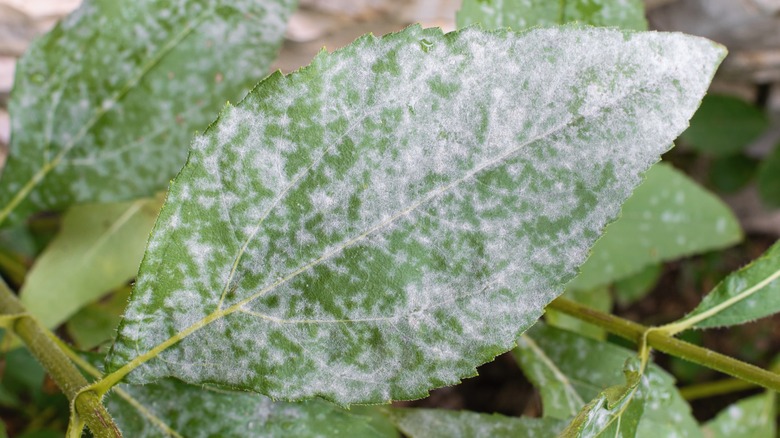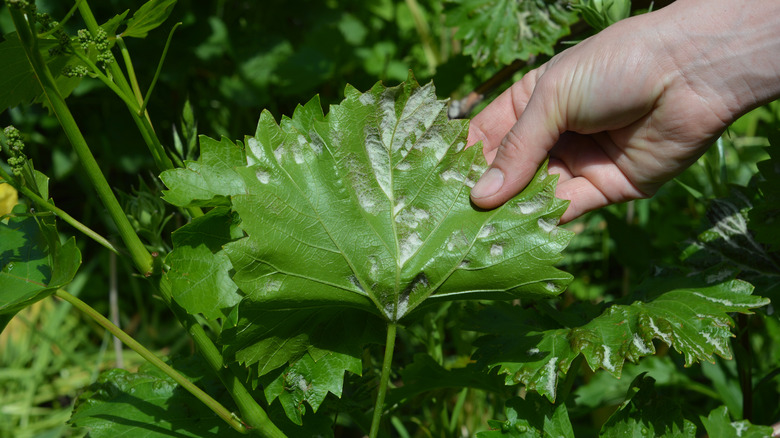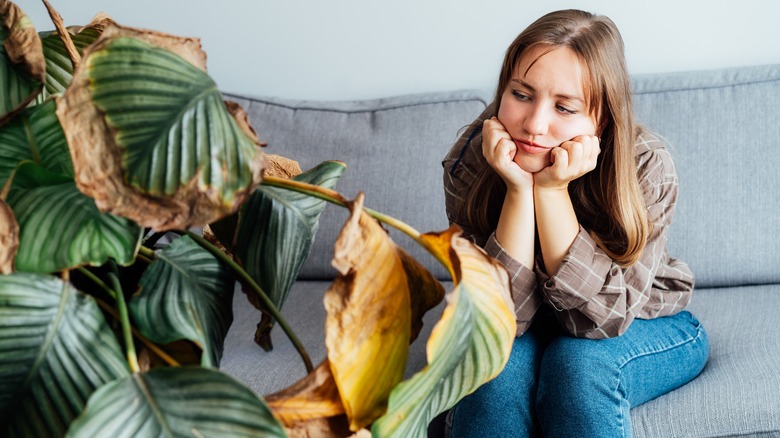Rid Your Garden Of Fungus Easily With These Common Kitchen Staples
Gardening is a great hobby because it is not only rewarding when you see all your hard work come to fruition, but it can also have a positive impact on your health and your mood — at least usually. When your entire vegetable patch comes down with a bad case of powdery mildew, it can feel like your garden is simply adding more stress to your life and worsening your mood instead of calming you. Powdery mildew is one of the most common garden fungal diseases and is typically caused by humid conditions and overwatering (an important gardening mistake to avoid).
While the most effective treatment against powdery mildew is fungicide, if you want to go for a gentler option, then two common kitchen staples can help: baking soda and dish soap. In fact, you can make a quick anti-mildew spray for your plants by simply mixing one tablespoon of baking soda with half a teaspoon of liquid dish soap and a gallon of water. Then, to use, simply pour the mixture into a spray bottle and evenly coat your entire plant.
How it works and how to use it effectively
However, before trying this method, it is important to know that baking soda and dish soap don't actually kill powdery mildew but instead create a more alkaline environment that prevents the mildew from spreading. This means that this mixture won't work well against a serious mildew infection. Instead, the baking soda and dish soap solution works best as protection for healthy sections of infected plants. Therefore, to treat your powdery mildew problem, the best thing to do is remove the infected parts of each plant and then spray the healthy parts to prevent further spread. If a plant is completely covered in mildew, it is past saving, and you should simply pull it and throw it away.
Another effective method is to spray plants that are likely to catch powdery mildew before it has a chance to grow. Some plants that are particularly vulnerable to powdery mildew infections include crab apples, lilacs, bee balm, roses, cucumbers, squash, and pumpkins. To protect susceptible plants, you can spray the baking soda and dish soap mixture on them once a week.
A few caveats
When using baking soda and dish soap as a protection against fungal disease, it is important to know that applying it incorrectly could cause further damage. In fact, as discovered by one Redditor on the gardening forum of the website, if you don't add enough water to the mixture it can burn your plants. In this case, the Redditor accidentally added one quart of water instead of one gallon and ended up turning their plants brown. To prevent burns, you will also want to try and apply the mixture on a cloudy day. If you are worried about the effect the baking soda will have on a specific plant, you can first test it on a few leaves before coating the entire thing.
You should also avoid applying the baking soda mixture on your plants during a drought, not because it may burn your plants but because the lack of rainfall will allow the bicarbonate from the baking soda to start building up in the soil. According to the Brooklyn Botanical Garden, this will prevent your plants from accessing important nutrients, leading to poor growth and yellow leaves.


